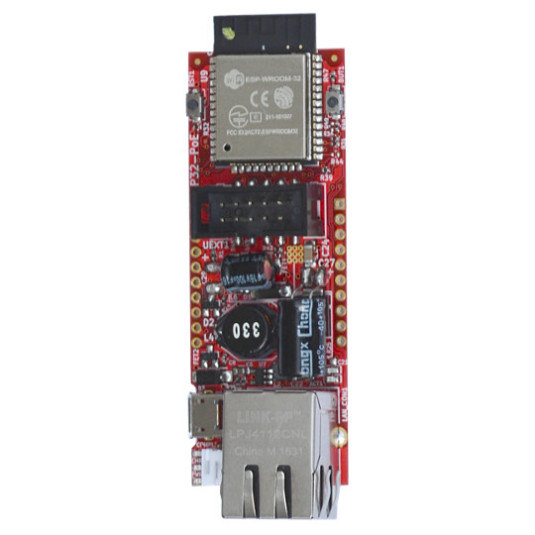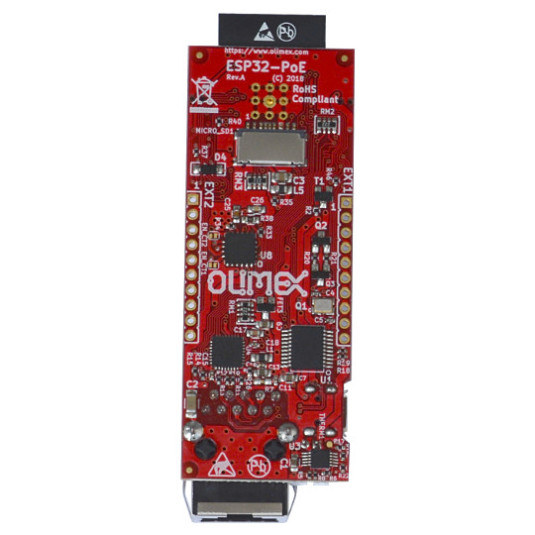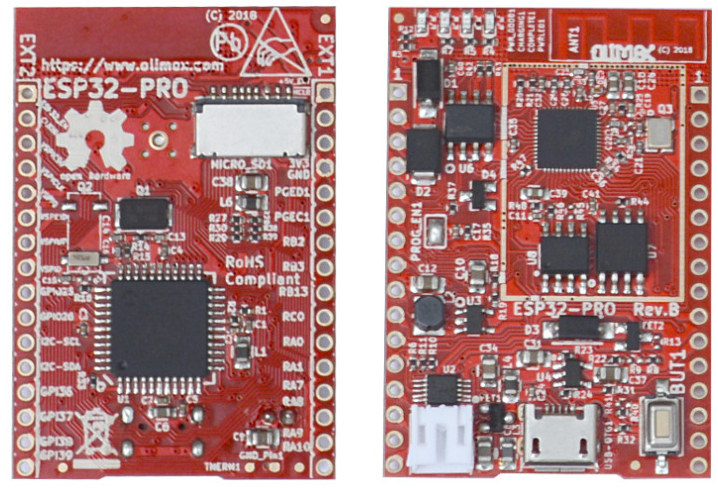One of the differences between ESP8266 and ESP32 is the latter adds an Ethernet MAC, and as a results we have seen a few ESP32 boards with an Ethernet jack offering 10/100M connectivity, including Olimex ESP32-GATEWAY, Olimex ESP32-EVB, or ESP32 Monster Board.
ESP32 Ethernet enabled boards are definitely in the minority however, and what’s even more difficult to find is an ESP32 board with Power-over-Ethernet (PoE) support. The good news is that if you’re looking for such type of board, Olimex is working on one based on requirements from their customers.
 Olimex ESP32-POE board specifications:
Olimex ESP32-POE board specifications:
- Wireless module – ESP32-WROOM-32 module with 802.11 b/g/n WiFi and Bluetooth LE
- External Storage – micro SD card socket
- Connectivity – 10/100M Ethernet with PoE power management based on Si3402 IEEE 802.3at Type 1-compliant chip
- Expansion
- UEXT connector for Olimex modules
- 2x GPIOs stripes spaced at 1″ on 0.1″ step
- Debugging/Programming – micro USB port + CH340
- Power Supply
- 5V via micro USB port
- Via Ethernet cable thanks to PoE
- 2-pin header for LiPo battery
- Dimensions – 73 x 28 mm
ESP32-POE board is not quite ready yet, but the wait won’t be long, since Olimex will start selling the board at the end of August. [Update September 7, 2018: ESP32-POE board is now up for sale for 17.50 Euros]
The company also made two other announcements yesterday, First, they are also working on a version of ESP32-EVB with an external antenna called ESP32-EVB-EA, designed for customer waiting to use a metal box with the board. Both the new board and case will be available at the end of August. I’ll let your know at launch.
Finally, the company has also released ESP32-PRO board for 18 Euros. The open source hardware board features ESP32-D0WDQ6 WiSoC, 32Mb SPI Flash, 32Mb PSRAM, an optional crypto engine for IoT authentication, a USB-OTG port, a Lipo charger, a Microchip PIC32 microcontroller with 256KB Flash and 64KB RAM, a micro SD card, an on-board antenna, and some expansion headers.
The Microchip MCU can be used to program the board, or change the USB profile such USB keyboard, serial, MIDI, and more.

Jean-Luc started CNX Software in 2010 as a part-time endeavor, before quitting his job as a software engineering manager, and starting to write daily news, and reviews full time later in 2011.
Support CNX Software! Donate via cryptocurrencies, become a Patron on Patreon, or purchase goods on Amazon or Aliexpress






